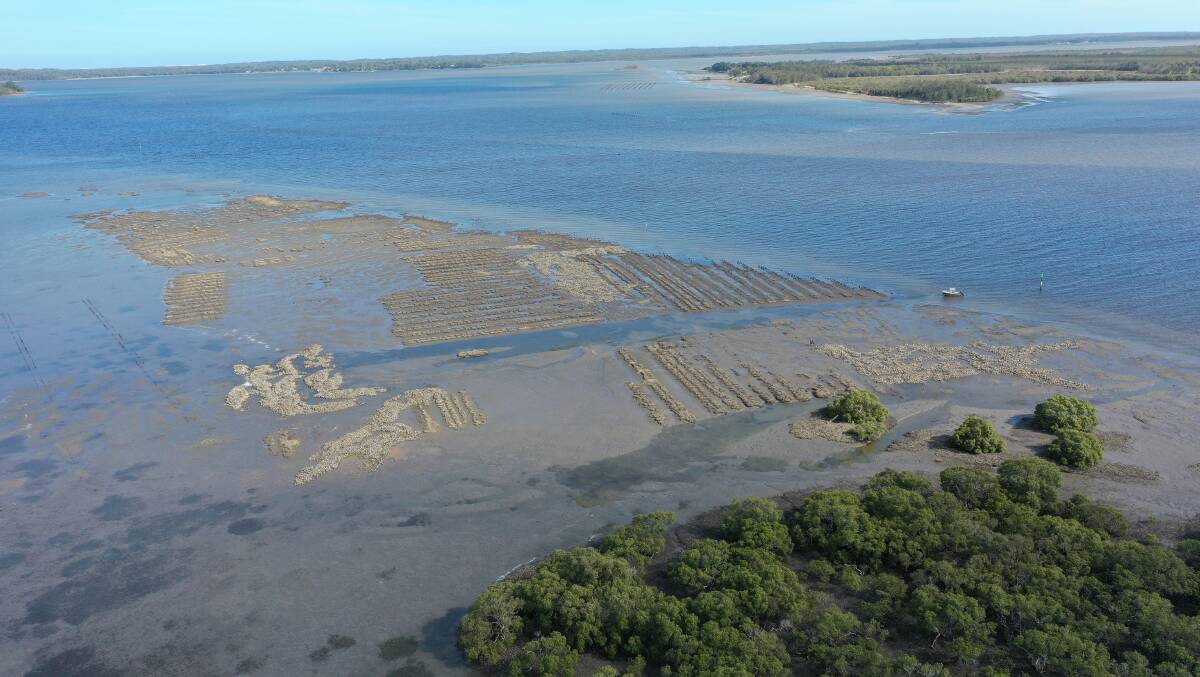Anglers and marine life are already reaping the benefits of a NSW Department of Primary Industries project being piloted in the Port's waterways which uses one of its founding industries, oysters, to boost the estuary habitat.
Subscribe now for unlimited access.
or signup to continue reading
DPI Senior Fisheries Manager Kylie Russell said researchers had been pleasantly surprised with how quickly they were seeing positive results since placing 3300 tonnes of rock and 180 cubic metres of recycled oyster shell in two sites near Tea Gardens and Karuah to create oyster reefs.
"We've been surprised by how quickly we've been able to document the settlement of baby oysters on the rock. Within days they had started settling and growing," she said.
"Researchers have already documented fish and invertebrates utilising the new reefs and settlement of oysters began within days of the rocks being placed."
The first of its kind Fisheries project has been funded as an initiative of the NSW Marine Estate Management Strategy.
It is hoped the results from the Port Stephens oyster reef, which was established between the start of January and mid-March, will guide Fisheries on restoring other oyster reefs in estuaries across the state.
Oyster reefs once covered large areas of the state's estuaries, providing habitat and food for fish, invertebrates and other marine life, but many have been lost over time.

Ms Russell said there was a number of reasons as to why Fisheries picked Port Stephens to pilot the large scale oyster reef restoration project.
"Port Stephens has a really large and very willing, helpful and enthusiastic oyster industry. They supplied us with 180 cubic metres of used oyster shell for the pilot," she said.
"The Port Stephens Fisheries Institute is based in Taylors Beach so the reef is nice and local to check on.
"Port Stephens is also blessed with quite a few remnant oyster reefs. The Hunter River has some and there's some in other estuaries across the state, but there's very few left.
"Having those natural remnant oyster reefs was a pretty good indicator that the pilot could be successful.
"The Karuah site is in an amongst old aquaculture areas. The individual lumps and rocks are already covered in oyster reef growth there. Really, it's just limited by how much hard rock those oysters can start to grow on. You put more rock or hard substrate out you get more oysters growing in those areas. That was one of the reasons why the Karuah site was chosen.
"The Myall site has oyster reefs in vicinity but not right where we're doing it. So that one is looking at what happens when we put rock in a bare area."
Both reefs are in general use zones, not in sanctuary zones, and are available for anglers to fish beside.
Ms Russell said researchers had documented high fish activity at the sites, with the reef attracting brim and tarwhine among other species.
"One of the main benefits to get out the program long term is benefits to water quality through the oysters cleaning the water," she said.
"The reefs provide water filtration and shoreline protection, and the structural cover they offer for recreational and commercially important fish species gives a real boost to sustainable fishing in the area.
"We know that in addition to providing habitat and food, oyster reefs deliver a wide range of other benefits for marine life and water quality.
"We will continue to monitor the development of the reefs as habitats and breeding grounds for key species, and to guide future oyster reef restoration work across the state."

